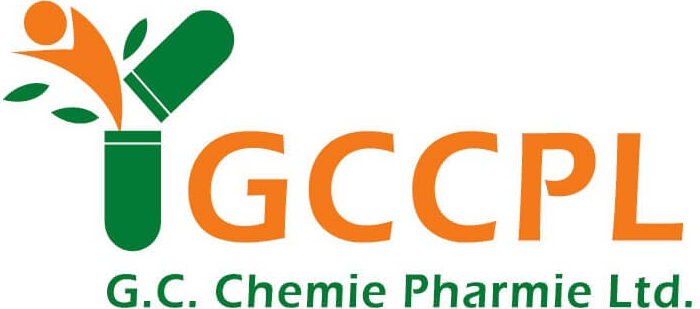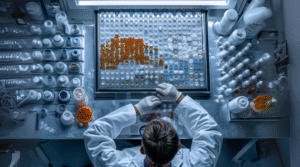Terminologies related to active pharmaceutical ingredients and drug formulations are standard in the large pharmaceutical sector.
Formulation manufacturing and API formulation are two crucial steps in a carefully planned process that transforms a basic tablet into an advanced injectable.
For the medication to be effective, safe, and of high quality, both procedures are essential. Despite their similar names, they have quite diverse purposes in the creation and development of drugs.
This blog explains what an API is, how formulation manufacturing works, the main distinctions between the two, and the difficulties each method encounters.
What Is an API (Active Pharmaceutical Ingredient)?
The term “active pharmaceutical ingredients” (API) refers to the active component in all medications. Manufacturers call any material that directly addresses a disease or affects a condition an active pharmaceutical ingredient (API) when it is used in production. These compounds are essential because they exert direct pharmacological effects that help diagnose, treat, prevent, or alter the body’s structure. API manufacturing India is a complex process that requires significant expertise.
Every medication consists of two components: the API and excipients, often referred to as API support. As a result, any final medicine is composed of the API and excipients.
What Is Formulation Manufacturing?
The API formulation is the therapeutic basis of a drug product, but the formulation manufacturing process encompasses all aspects of the product and its active ingredient. Formulation involves blending the active pharmaceutical ingredient (API) with other inactive ingredients to provide a deliverable, safe, and effective product.
It includes selecting suitable excipients, designing dosage forms, and adjusting the product’s physical properties. There are many aspects of the formulation process, including stability, patient acceptance, desired release rate, and mode of application.
Additionally, it determines how the medication appears, tastes, breaks down, and is absorbed when applied or consumed. Formulation is concerned with the making of a product such that a patient receives the API safely and effectively.
Formulation scientists usually balance the drug’s bioavailability, solubility, and stability to ensure the patient adequately absorbs the medicine and achieves the desired therapeutic effect.
Key Differences Between API and Formulation Manufacturing
API and formulation in pharma are both crucial components of pharmaceutical medications; however, it’s essential to recognize how they differ:
The API:
- Pharmaceutical API is the active substance in a pharmaceutical that provides the therapeutic effect of the drug.
- The API manufacturing India is subject to stringent regulatory procedures and manufacturing norms.
- Manufacturers can create it using natural ingredients, chemical synthesis, or biotechnological techniques.
- It is the active part of a drug that directly acts on specific biological targets.
- It also receives substantial funding for research and development.
The Formulation:
- The process of combining the API with other substances to produce a medicinal product that is suitable for administration and is safe and effective.
- Involves selecting appropriate additives and improving the drug’s physical characteristics to achieve the best possible delivery.
- Takes account of factors such as patient compliance, stability, release profile, and methods of administration.
- Balances stability, solubility, and bioavailability of the drug.
- Seeks to ensure that the API is easily absorbable and has the desired therapeutic action.
Challenges in API and Formulation Manufacturing
In the present cutthroat global market, pharmaceutical manufacturing has specific essential hurdles with both API and formulation in pharma. Although these originate in separate spots in the production cycle, they are nevertheless intimately allied.
Regulation and Quality Oversight: There are stringent regulations governing formulations and APIs, with a focus on patient safety and product effectiveness. Regulatory authorities set the rules and laws that govern the manufacture, testing, and marketing of pharmaceutical products.
Quality Control and Purity: The most serious difficulty in pharmaceutical API is the purity of APIs and excipients. Even trace contaminants or impurities may compromise safety and efficacy. Also, it is essential to ensure that stability with respect to appearance, effective dose, etc., is maintained during the manufacture of formulations.
Dependency on Raw Materials: A large proportion of the raw materials required for API manufacturing India has to be imported, particularly from countries like China. Hence, the industry is subject to supply chain interruptions due to trade restrictions and political issues.
Environmental Sustainability: Because APIs are produced using a variety of chemicals, solvents, and energy-intensive processes, their production can have a significant environmental impact. The pharmaceutical industry in India is increasingly concerned about environmental sustainability, and firms are facing mounting pressure to reduce their environmental impact. Manufacturers can apply green chemistry principles, such as using cleaner solvents and producing less waste, to overcome this obstacle.
India’s Growing Role in Global API and Formulation Manufacturing
The pharmaceutical industry in India has emerged as a powerhouse in the production of APIs (active pharmaceutical ingredients) and formulations in the last two decades. Also known as “The Pharmacy of the World”, India has contributed significantly to global drug supply.
India is emerging as a powerful player in the global market for active pharmaceutical ingredients (APIs). At present, more than 2000 APIs are manufactured in India, and India is the 3rd-largest API manufacturer in the world, with a compound annual growth rate of 13.7% over the coming years. It is worth noting that 57% of the WHO list of prequalified APIs are manufactured in India, which is very significant for the world health system.
Low-cost manufacturing of pharmaceutical products has enabled easy, economical global access to high-quality products, thanks to the production cost advantage of India’s pharmaceutical companies in manufacturing APIs. Through export of APIs to more than 200 countries, India has emerged as a dominant player in the global pharmaceutical supply chain, further fortified by a strong manufacturing base.
Additionally, Indian companies are investing in research and development to develop cutting-edge formulations, including biosimilars, innovative medication delivery systems, and controlled-release tablets. India has a competitive advantage thanks to the combination of innovative API formulation and superior formulation manufacturing.
Conclusion
The API formulation and the manufacturing of the drug itself are two critical stages that turn raw materials into a marketable medicine. The formulation part delivers the active chemical compound responsible for the drug’s therapeutic effect into the patient’s body safely and efficiently, whilst API manufacturing is the process of producing the compound itself.
Pharmaceutical manufacturers have an excellent opportunity to maximize production capacity, maintain high-quality output, and ensure compliance with global manufacturing standards by understanding the key differences between API and formulation manufacturing processes.
With its rapidly expanding pharmaceutical industry in India, advanced infrastructure, and government initiatives such as the API Manufacturing India program, India stands at the forefront of global drug production.



